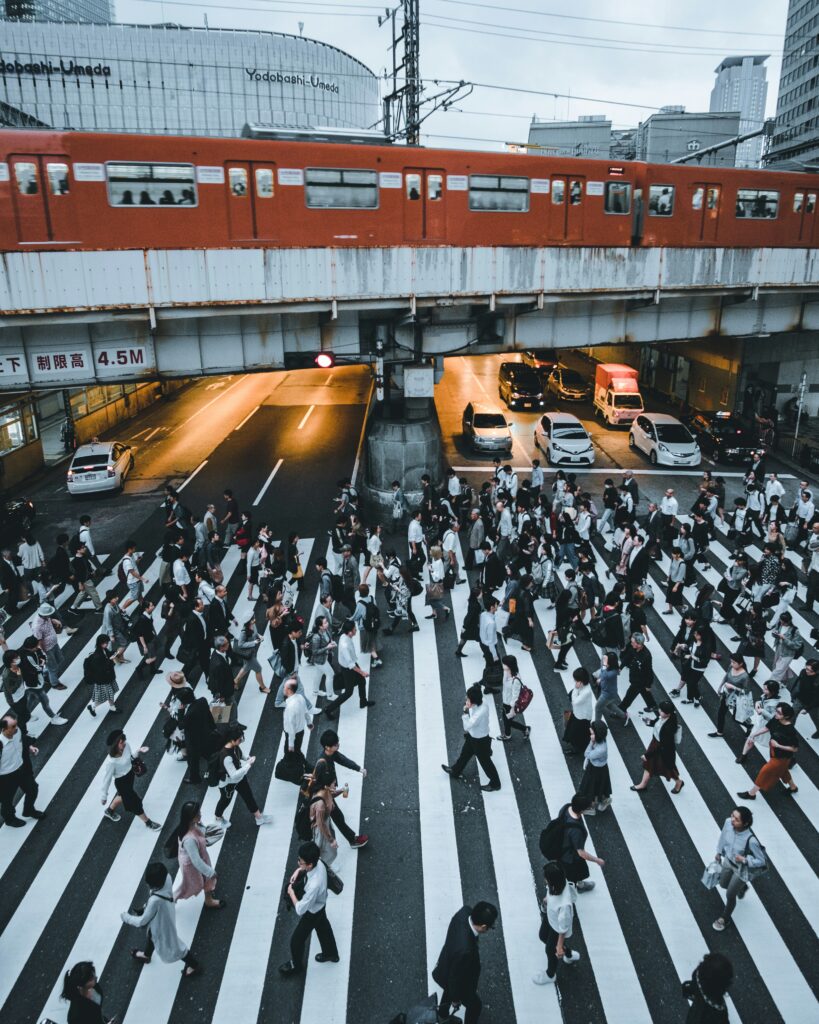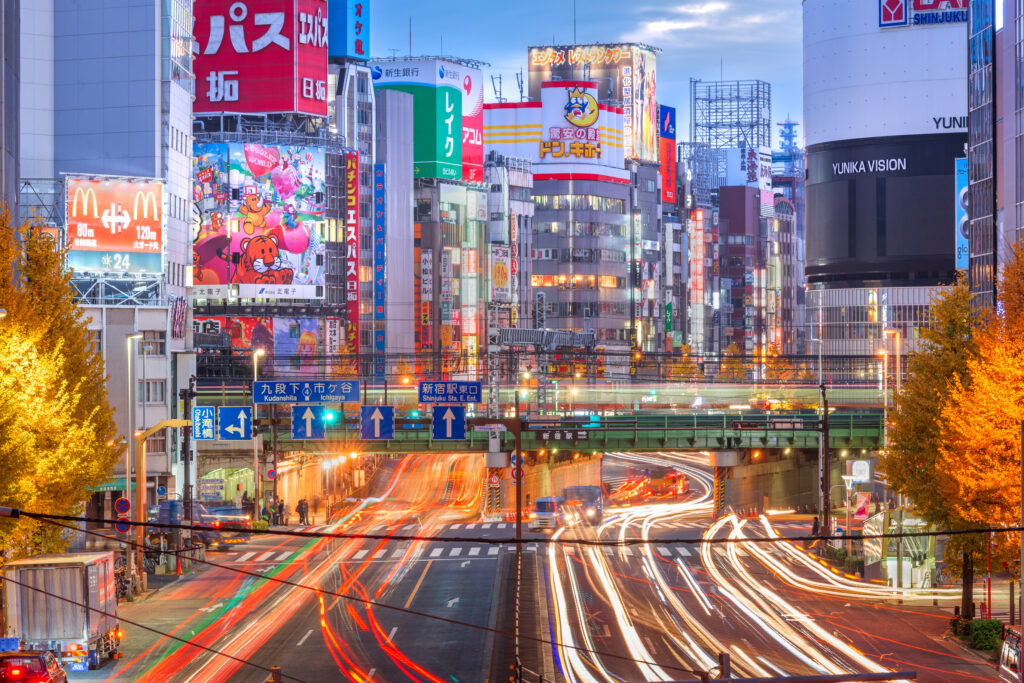Rush hour in Tokyo and Japan’s major cities, can be intense. However, considering just HOW MANY people use the train services every day–for example, over 3.5 million at Shinjuku Station–it’s mind-blowing how an excellent level of order is still maintained. One of the primary reasons for this ties to the seamless–almost invisible–cooperation among commuters and various efficient services offered by train companies.

Commuter cooperation:
During morning rush hours, commuters patiently stand in orderly lines, waiting for their turn to board as others exit. Japanese people learn this kind of discipline from an early age at school, for example, by practicing commands like “mae-narae”, which means “to line up in a queue” (particularly at exactly one arm’s length between each other).
Another mesmerizing aspect is the quietness at stations (beside the beeping of ticket machines and jingles of the trains arriving or departing). This is also a deeply-rooted sense of mindfulness where people stay aware of their individual role within the whole in order to maintain collective harmony and peace.
Train services:
- Punctuality
Japanese trains are famous for their punctuality, which keeps the consistent and smooth flow of people coming in and going out. Even minor delays prompt repeated announcements apologizing for the inconvenience.
- Multilingual displays
Electronic signs inside trains show upcoming stops in multiple languages, including English and Chinese, which makes it easier for international riders to navigate.
- Temperature control
Air conditioning in summers and heated seats during winter offer a comfortable riding experience. I theorize that this must have a mentally calming effect (albeit on a subconscious level) for riders who may otherwise be a little more grumpy about the jam-packed trains.
- Efficient ticketing
Rechargeable, prepaid cards like PASMO and SUICA allow passengers to quickly pass through and prevent bottlenecks.
- Handrails
Train slings (handholds) come in a few different lengths to accommodate passengers of varied heights (although in my experience, trains can be SO incredibly packed during rush hour that you don’t need to hold the train slings–there is just no space to fall)!
- Platform safety
Many subway stations have platform doors that only open after the train arrives, to prevent accidental falls onto the tracks, especially during rush hours.
- Convenience facilities
Most platforms have vending machines (sometimes even kiosks) for passengers’ convenience.
- Helpful maps
Platforms usually have simplified route maps showing the names of each stop, and even indicating which car of the train will bring you closest to the exit at your destination.

